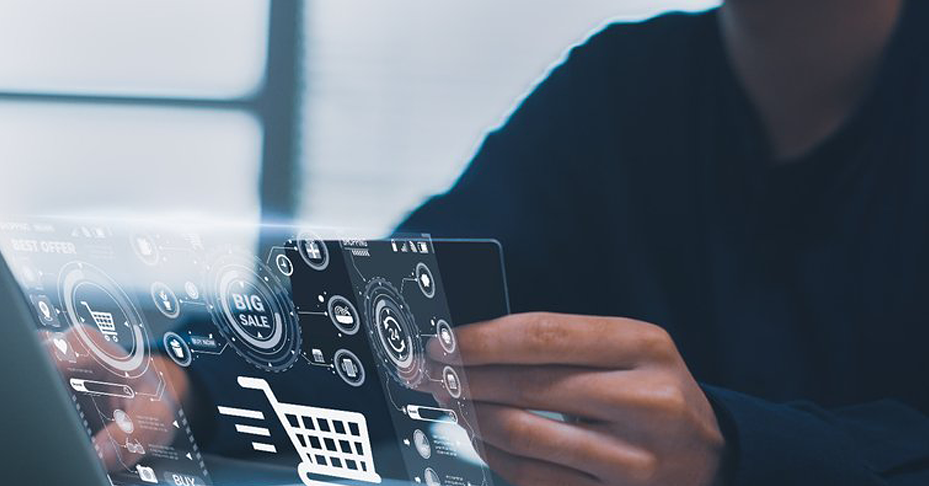Why Brands Should Prioritize Omnichannel Marketing

An earlier version of this piece appeared as a Retail Customer Experience post.
Today, customers expect to be able to interact with brands through a variety of channels, whether they be an online marketplace, mobile app, or physical in-store location. Consider these statistics:
-
65% of consumers expect brands to offer the same level of customer service across online and offline channels
-
87% of consumers prefer to research products online before purchasing them in-store.
-
80% of transactions still occur in physical stores.
Consumers want a seamless, omnichannel shopping experience and brands win when they provide it. Research shows that using three or more channels in a campaign can increase purchase rate by 287% and purchase frequency by 250%. It can even increase the average order size by 13%.
Now more than ever, brands need to increase investments in omnichannel marketing to reach customers, especially Gen Z, who are digital natives but also avid in-store shoppers. And the most effective omnichannel approach is one that gives brands customer data from every channel—even in store—so they can use it to surround their customers with personalized experiences that will drive revenue.
Reach Customers, Especially Gen Z, Where They Shop
In recent years, the consumer shopping experience has seen a series of dramatic changes. Shoppers have gradually moved online as smartphones proliferated, and there’s been a resurgence of in-person shopping as a unique experience unto itself. As a result, consumers have become accustomed to shopping through a range of channels, depending on their needs and preferences, and requiring brands to court them where they spend their dollars.
Generation Z, in particular, demands an omnichannel approach. As digital natives, Gen Z spend a significant amount of their time online to research, but they also assert a greater preference for in-person shopping than any other generation. As a result, brands hoping to reach these future power shoppers must have a seamless omnichannel customer experience that spans the varied channels where they choose to spend their time — and money.
One brand that has excelled in developing a robust omnichannel effort is BestBuy, which has created a seamless online, in-app, and in-person shopping experience that provides consumers with the options they crave. While BestBuy’s online store and mobile app give consumers the opportunity to browse deals and purchase items for at-home delivery or in-store and curbside pickup, the company has also begun experimenting with smaller pilot stores in which customers test curated products in person and then use the app to make purchases there. Customers can then pick up the product at the front desk and complete their purchases without interacting with sales representatives.
These new hybrid stores give Gen Z shoppers the in-person experiences they desire, while also excluding the elements they revile — namely the sales associates that only 7% of Gen Z respondents told Adyen they found appealing.
Create Omnichannel Conversations That Drive Data Collection
Omnichannel strategies also provide the opportunity to collect data across various points of the customer journey, equipping brands with actionable insights into the kind of products and experiences consumers are seeking. By their very nature, omnichannel strategies allow brands to extend their data collection methods beyond the confines of digital spaces into the real world, where customers are often willing to provide their data in exchange for personal value.
Nike, for example, has created an ecosystem of apps, an online storefront, and in-person experiences that reward consumers for participating in them and generate a significant amount of useful big data for the company.
The Nike app allows customers to “heart” their favorite styles, scan barcodes in-store to learn more about products, and redeem membership benefits when making in-person purchases.
The Nike SNKRS app grants sneakerheads access to exclusive releases and the ability to reserve in-demand kicks at nearby stores.
The Nike Training Club app provides users with a holistic training guide consisting of exercise routines, live-streamed classes, and resources covering nutrition and physical wellness.
This strategy encourages consumers to provide the data needed to personalize their own customer experience, which in turn empowers Nike to develop the products, deals, and marketing campaigns needed to retain them. Through such omnichannel efforts, Nike has created a data-driven ecosystem that provides value to consumers, whether they’re online, in app, or in person.
Drive Customer Engagement With Personalization across Channels
Consumers favor different channels based on their personal needs and tastes. At the simplest level, personalization needs to be consistent across the various channels to deliver a seamless experience.
One brand that has achieved stand-out customer personalization is Home Depot, which has fully embraced an omnichannel customer experience through the integration of their online store, mobile app, and in-person locations. In 2021, the company expanded its military discount, giving all US active service members, their spouses, and veterans 10% off both in-store and online.
Before making a purchase, military customers can register through the customer app, which serves two purposes. It allows the customer to obtain the discount online and streamlines the check out process in store. Rather than having to present other forms of identification, the customer can use Home Depot’s app to present a barcode to the cashier, ensuring that they qualify for the military discount.
At the root of Home Depot‘s omnichannel offering is an understanding that today’s consumer wants to receive the same benefits and high level of customer experience across all channels. This reality is here to stay, and retailers that can adopt similar approaches are well positioned for the future of commerce.
Sai Koppala is the CMO of SheerID, the leader provider of identity verification for gated offers—exclusive promotions brands use to target their best customers. SheerID InStore lets customers redeem their offers in person, and gives brands an omnichannel solution that provides first-party data to drive customer loyalty.